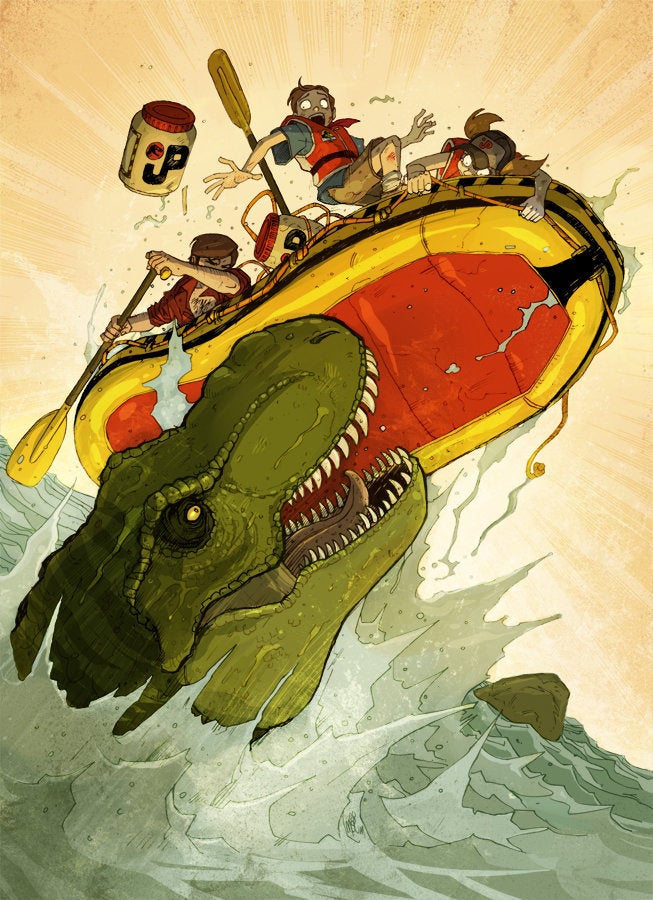The 1993 release of "Jurassic Park" was certainly a dinosaur-sized event. From reportedly causing a rise in the number of students applying to paleontology programs to influencing the naming of the new NBA team -- the Toronto Raptors -- the Jurassic (but actually Cretaceous) excitement was pretty clear. Through the movie's massive marketing campaign, "Jurassic Park" even led to the creation of the "Supersize" option at McDonalds -- appropriately called Dino-size at the time. Despite dinosaurs only appearing in about 15 minutes of the movie, America was certainly taken by dinomania.
With the forthcoming release of "Jurassic World," the adventurous desire to revisit the world's most dangerous amusement park is coming back. In honor of Steven Spielberg's birthday, Dec. 18, here are five things you didn't know about one of his classic movies:

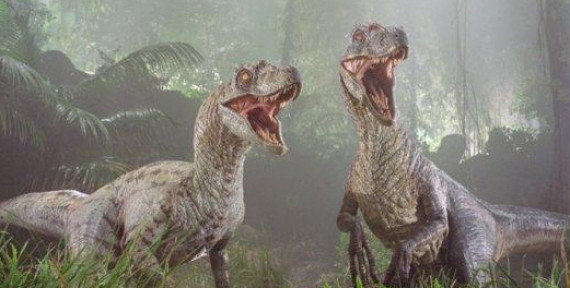
The sound designer for "Jurassic Park," Gary Rydstrom, told Vulture in 2013, "If people knew where the sounds in 'Jurassic Park' came from, it'd be rated R!"
Since nobody knows exactly what dinosaurs sounded like, Rydstrom spent months recording animal noises. After talking with Rydstrom, writer Kyle Buchanan concluded that "some of the sounds are sorta smutty." Rydstrom's work on "Jurassic Park" paid off, winning him two Academy Awards.
Many different dinosaur noises were created by capturing various animals -- such as horses and a dolphin -- in heat, but arguably the most smutty is the origin of the velociraptor grunts:
It's somewhat embarrassing, but when the raptors bark at each other to communicate, it's a tortoise having sex. It's a mating tortoise! I recorded that at Marine World … the people there said, "Would you like to record these two tortoises that are mating?" It sounded like a joke, because tortoises mating can take a long time. You've got to have plenty of time to sit around and watch and record them.
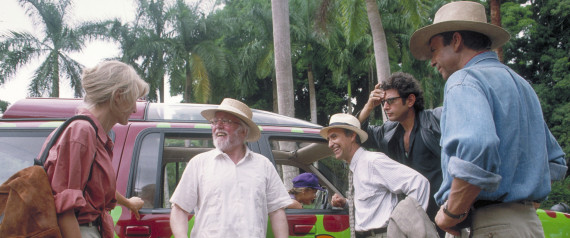
Hurricane Iniki, the most powerful to hit Hawaii in recorded history, struck while the cast and crew of "Jurassic Park" were on the island of Kauaʻi. Winds that apparently reached 145 mph trapped everyone in a motel, which actress Laura Dern explained in 1993 to Moveline:
Don't forget, we were stuck in a hurricane in Hawaii together and had to all stay in a motel room together for a couple of days. No food, no water. It was scary. We didn't know what was going to happen. The morning after, Steven, Jeff Goldblum and I walked through the ruins and we really felt bonded. So maybe that kind of experience created a gentler, more open relationship with Steven. He was very honest in sharing with us his frustration about his complete loss of control. He couldn't protect his crew, he couldn't protect his sets. And Spielberg had a lot of fear about it, getting everybody out. He said to me recently, "I felt more bonded with you guys than I have in a long time with people on a movie."
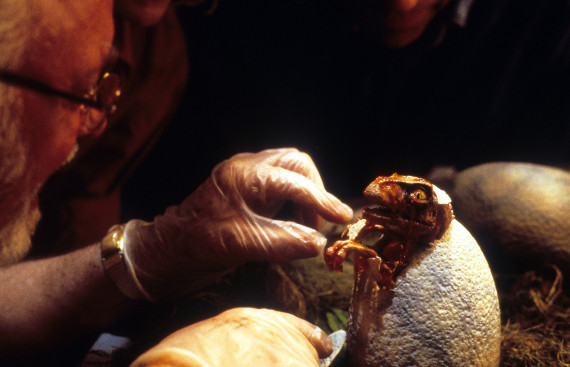
In an interview with Cinefantastique in 1993, Academy Award winning visual effects expert Stan Winston noted that making the dinosaurs seem as if they truly came to life was the "biggest challenge" for the movie. Winston, who also won an Academy Award for this particular job, said the dinosaurs needed to be the equivalent of a couple actors with recognizable names:
They had to act. We couldn’t cast a gorgeous actor who couldn’t deliver a line; we had to create saurian Robert De Niros and Jack Nicholsons. That’s stretching it, but in the broadest sense of the term, we did need to create characters that performed. I think what we accomplished is beyond anything like this that’s been done in motion-picture history. I’m hoping the audience will feel as I do.
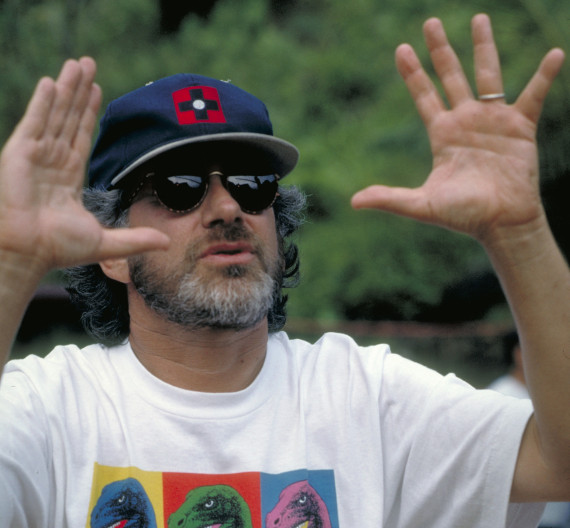
HuffPost Live asked Laura Dern earlier this year about her time on "Jurassic Park," and she shared this amazing story of Steven Spielberg having a very weak dinosaur roar:
I remember we were all standing in a row, and this crane of, like, chewed up metal comes up, and we're supposed to realize what the T-rex can do and all have this look to the side when we hear a sound. And we did a take and then we cut and Steven's like, "You guys were all looking different directions." We said, "Steven, we're supposed to respond to the sound and there's nothing there. We don't know when we're supposed to respond, so we're responding at different times." He goes, "Oh, oh, okay, I got this." Rolling and action! And we're all there looking, and the camera pushes in, and then Steven, through a megaphone, goes, "RAWR! RAWR!" And all of us looked at each other, and I remember Richard Attenborough going, "Oh, Steven, um, this is troubling."
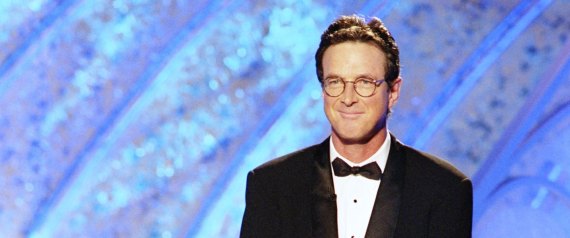
Crichton had been thinking about the basic premise of Jurassic Park for awhile, but it wasn't until he started publicly joking around about having a huge money-making idea that people pressured him to actually write the story. In a 1993 profile, the Guardian quoted Crichton as saying, "I'd tell them I was writing the most expensive movie ever made. But it was only a joke ... Of course, this being Hollywood, I'd only made my joke a few times before people started saying let's have lunch."
Spielberg ended up taking Crichton out to lunch and offered him $1.5 million for the rights and $500,000 to write a movie script. Spielberg presumably heard the joke as at the time, Crichton and Spielberg were also working on a screenplay that ended up becoming the TV show "E.R."
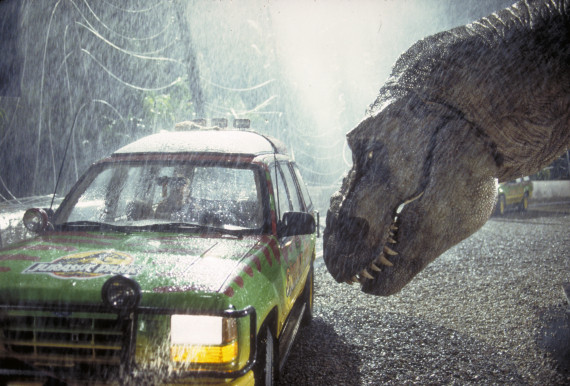
For a 1993 article in The New York Review of Books, writer and paleontologist Stephen Jay Gould addressed this problem:
Pardon some trivial professional carping, but only two of the dinosaurs featured in the film version of Jurassic Park actually lived during the Jurassic period -- the giant sauropod Brachiosaurus, and the small Dilophosaurus. All the others come from the subsequent Cretaceous period—a perfectly acceptable mixing given the film’s premise that amber of any appropriate age might be scanned for dinosaur blood. Still, the majority might rule in matters of naming, though I suppose that Cretaceous Park just doesn’t have the same ring.
Gould also confronted Crichton about the difference:
When I met Michael Crichton (long before the film’s completion), I had to ask him the small-minded professional’s question: “Why did you place a Cretaceous dinosaur on the cover of Jurassic Park?” (for the book’s dust jacket—and now the film’s logo -- features a Cretaceous Tyrannosaurus rex). I was delighted with his genuine response: “Oh, my God, I never thought of that. We were just fooling around with different cover designs, and this one looked best.” Fair enough; he took the issue seriously, and I would ask no more.

